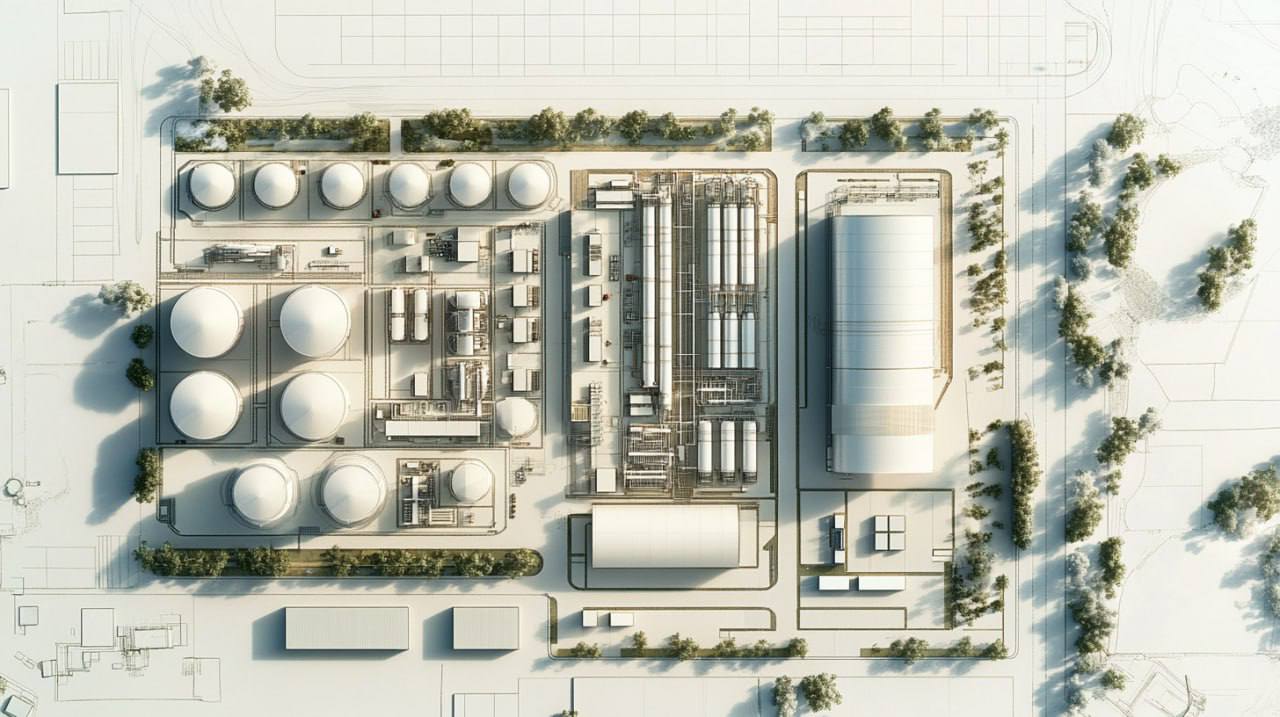
Myanmar's energy sector, like many other sectors, has been facing crises since 2021. These challenges are primarily due to the halting of projects that were previously running at full speed, the withdrawal of foreign investments, and a lack of economic credibility. The final point of concern is the struggle to keep existing operations running without interruption.
So, why is this happening? How is it unfolding? And are there still potential opportunities? Let's examine these questions.
Electricity
Myanmar has set a strategic goal of nationwide electrification by 2030.
Currently, Myanmar's electricity is sourced from 62 hydropower plants, 20 natural gas power plants, and one coal-fired power plant, totaling 83 power plants.
Despite this ambitious goal, only about half of the country's population is currently connected to the National Grid. The other half relies on their own arrangements for electricity. Moreover, 80% of the rural population still lacks access to electricity. Even as these shortages persist, nationwide electricity consumption continues to rise annually.
According to the Ministry of Electric Power (MOEP), Myanmar's electricity demand is increasing by 15% to 17% annually. At present, Myanmar can only produce 3,600 megawatts. The World Bank estimates that Myanmar will need to produce a total of 8,600 megawatts by 2025, and this requirement will increase to 12,600 megawatts by 2030. Successive governments have been striving to meet this demand.
Records from the Directorate of Investment and Company Administration show that the NLD government approved 20 electricity supply projects during its 5-year term. These projects were expected to generate 2,477 megawatts of electricity. Of the 30 approved projects, 8 were Chinese projects, expected to generate 1,350 megawatts.
The civilian government had drafted a National Electrification Plan (NEP), which would require a total investment of $5.4 billion to complete. For power distribution, about $40 billion would be needed.
However, after 2021, electricity projects, like other businesses, have been thrown into disarray.
Current Situation
Myanmar continues to face challenges in achieving stable and sufficient electricity supply from 2021 to the present. Let's look at what's happening now.
Currently, CNTIC VPower's LNG power plants in Yangon have been suspended. The lines connected to the Beluchaung hydropower plants are frequently experiencing damage and malfunctions. Despite flooding during this year's rainy season, water levels in reservoirs are expected to decrease in the summer, leading to reduced electricity production. The Civil Disobedience Movement against government departments has also resulted in a loss of human resources.
At the same time, global oil and fuel prices are rising. As a result, while the civilian government was able to purchase and use Liquefied Natural Gas (LNG) for electricity generation, it's now much more difficult to do so. Additionally, the depreciation of the kyat, rising dollar prices, dollar shortages in the domestic market, and the reversal of foreign investment have all slowed down the energy sector.
The civilian government had mapped out potential locations for 41 power plants to be built between 2016 and 2031. However, many energy projects approved before 2021 have now been suspended, further complicating the situation.
Potential
In fact, Myanmar is a country with significant potential for electricity generation. This is evident from the fact that even China and Thailand import natural gas from Myanmar annually.
Myanmar owns 7.7% of Asia's water resources. 62% of Myanmar's current power is generated from hydroelectric sources. Myanmar has 27 hydroelectric power plants, with 8 more under construction.
Myanmar has numerous rivers and streams for electricity generation. Kachin State, Shan State, Kayah State, and Rakhine State are particularly promising areas for hydroelectric power generation. According to the Asian Development Bank (ADB), Myanmar has significant potential in hydropower and could produce up to 100,000 megawatts.
It's crucial to note that efforts must be made to reduce the risk of environmental damage and to obtain genuine consent from local communities. Without these steps, hydroelectric power generation will remain a distant goal. If these issues can be addressed through public awareness and negotiation, hydropower could become a viable option for future electricity generation.
Another potential area is solar projects.
The only completed solar project in Myanmar is the 170-megawatt Minbu Solar Project in Minbu Township, Magway Region. During the NLD government's tenure, a renewable energy policy was drafted. Tenders were called for 29 1-megawatt solar projects, with Chinese companies winning 28 of them. However, Sungrow, one of the largest successful bidders from China, announced in April 2022 that it had cancelled its 2020 tender-winning project.
In June 2021, the military council called for tenders for 1-megawatt solar projects. However, due to a lack of applicants after several months, the tender submission date was postponed.
The SAC claims that the 40-megawatt Letpanhla Solar Project and the 30-megawatt Nyaungpingyi Solar Project are over halfway complete. This is the current state of solar projects in Myanmar.
It's clear that the SAC itself is interested in attracting investors for solar projects. Central Myanmar, in particular, is a vast and dry region with great potential for solar power generation.
According to data from MIMU, about 30,000 rural villages cannot be connected to the main power grid. Therefore, there is a massive need for electricity. Solar energy could be a potential solution for these villages.
Challenges in Attracting Foreign Investment
Myanmar has drafted a National Electrification Plan (NEP) that combines hydropower, natural gas, coal, and renewable energy. As mentioned earlier, this plan aims to achieve nationwide electrification by 2030. Foreign investment is particularly crucial for this. However, from an investor's perspective, there are numerous challenges to investing in Myanmar's energy sector.
One of the reasons is the economic sanctions imposed by the United States. These sanctions not only prevent new foreign investments but have also led to the withdrawal of existing foreign investment companies. There are also existing barriers in the banking system.
In addition to these factors, there are difficulties in obtaining necessary information from the current government for oil and natural gas exploration. Corruption and bureaucratic procedures for conducting business are also obstacles to attracting foreign investment.
The main factors deterring foreign investment in Myanmar include political and economic instability, ongoing conflicts, weak rule of law, excessive bureaucratic red tape, and policy rigidity.
Therefore, while Myanmar needs electricity and there are companies interested in generating it, with permissions granted for electricity generation, foreign investors remain hesitant to invest in the electricity sector, which is a mix of uncertainties and potential.
Similarly, the people of Myanmar will inevitably continue to live in darkness for the foreseeable future.
Han Thit Eain (Y3A)
 Build Myanmar - MediaY3A
Build Myanmar - MediaY3A
 Build Myanmar - MediaAung Phyo Thu
Build Myanmar - MediaAung Phyo Thu
Build Myanmar-Media: Insights – Empowering Myanmar Youth, Culture, and Innovation
Build Myanmar-Media Insights brings you in-depth articles that cover the intersection of Myanmar’s rich culture, youth empowerment, and the latest developments in technology and business. Stay informed and inspired as we rebuild Myanmar through knowledge and innovation.
📅 New content every week, featuring stories that connect Myanmar’s heritage with its future.
📰 Read on:
- Website: https://www.buildmyanmarmedia.com/
- Facebook: https://www.facebook.com/buildmyanmar
- YouTube: https://youtube.com/@buildmyanmarmedia
- Telegram: https://t.me/+6_0G6CLwrwMwZTIx
- Inquiry: support@buildmyanmar.com
#BuildMyanmararticles #Myanmararticles #MyanmarUpdates #MyanmarNews #BuildMyanmarMedia #MyanmarHeritage #Insights #Media #MyanmarMedia
Sign up for Build Myanmar - Media
Myanmar's leading Media Brand focusing on rebuilding Myanmar. We cover emerging tech, youth development and market insights.
No spam. Unsubscribe anytime.
